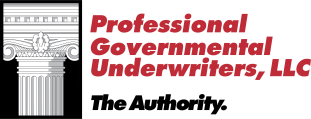Charter Schools vs. Public Schools: Key Differences

Key Components of a Successful Special Education Program
April 6, 2020
Maximizing Safety in an Active Shooter Threat
April 20, 2020Charter Schools vs. Public Schools: Key Differences
Finding the right school fit for children can be one of the most difficult and challenging decisions for parents. Schools with the right education standards and resources that can serve students the best can be hard to find or get into. One solution parents are turning to is to put their children in the charter school system. These schools include a flexible curriculum and can align with the education goals a family has. But how do charter schools line up with public schools?
Here are some key differences to consider.
Charter vs. Public Schools: A Closer Look
First, it’s important to get a better understanding of what charter schools and public schools are, and how they serve students.
Charter schools are a taxpayer-funded education option that cost little to no money to attend. They may be publicly funded, but they are still autonomous and independent and are not connected to any school districts.
Public schools, on the other hand, are also funded by taxes, but stick to a strict curriculum along with other schools in a specified district outline. Public schools are regulated by the district and must meet certain standards from state education.
While this should give readers a general sense of how they differ, there are more differences that make the gap between them even more significant.
Admissions
All children are allowed to go to both school settings, but for public schools, this depends on the district. This also depends on if the public school has open enrollment. In this case, parents are allowed to choose the schools their children study at. These schools may also have provisions for schools in other districts.
For charter schools, parents are able to send their children to any charter school, provided they can transport them there somehow. Charter schools cannot deny a student admission unless a student does not meet grade or attendance requirements.
Charter schools also use a lottery system and students who are not picked are not offered admission.
School Funding
Both school systems are funded by the government through taxes. Charter schools are run like private schools and public schools are not. Charter schools receive funding from state tax income, donations, and grants. Public schools get their funding from the federal government as well as state and local governments, awards, and donations.
Charter schools utilize a per-student approach to receive funding, whereas public schools get more funding from taxes.
Attendance Numbers
Public schools outline the number of students allowed to attend based on the needs of the school and the district it’s in. These schools are not allowed to turn students away, even if the school is at its maximum capacity. For open enrollment schools, children who are not admitted have to choose neighboring schools.
Charter schools admit students based on a certain threshold. These schools apply a different curriculum and a more hands-on approach to schooling, which means that the student body is limited. If schools exceed a threshold, a lottery system is put into motion.
About PGUI
Professional Governmental Underwriters, Inc., is a full-service risk management company dedicated to assisting public, educational and non-profit entities in the management of their professional liability exposures including educators’ liability insurance. We are dedicated to providing state-of-the-art professional underwriting management and loss control advisory services on behalf of our designated carriers. For more information, call us toll-free at (800) 586-6502.


